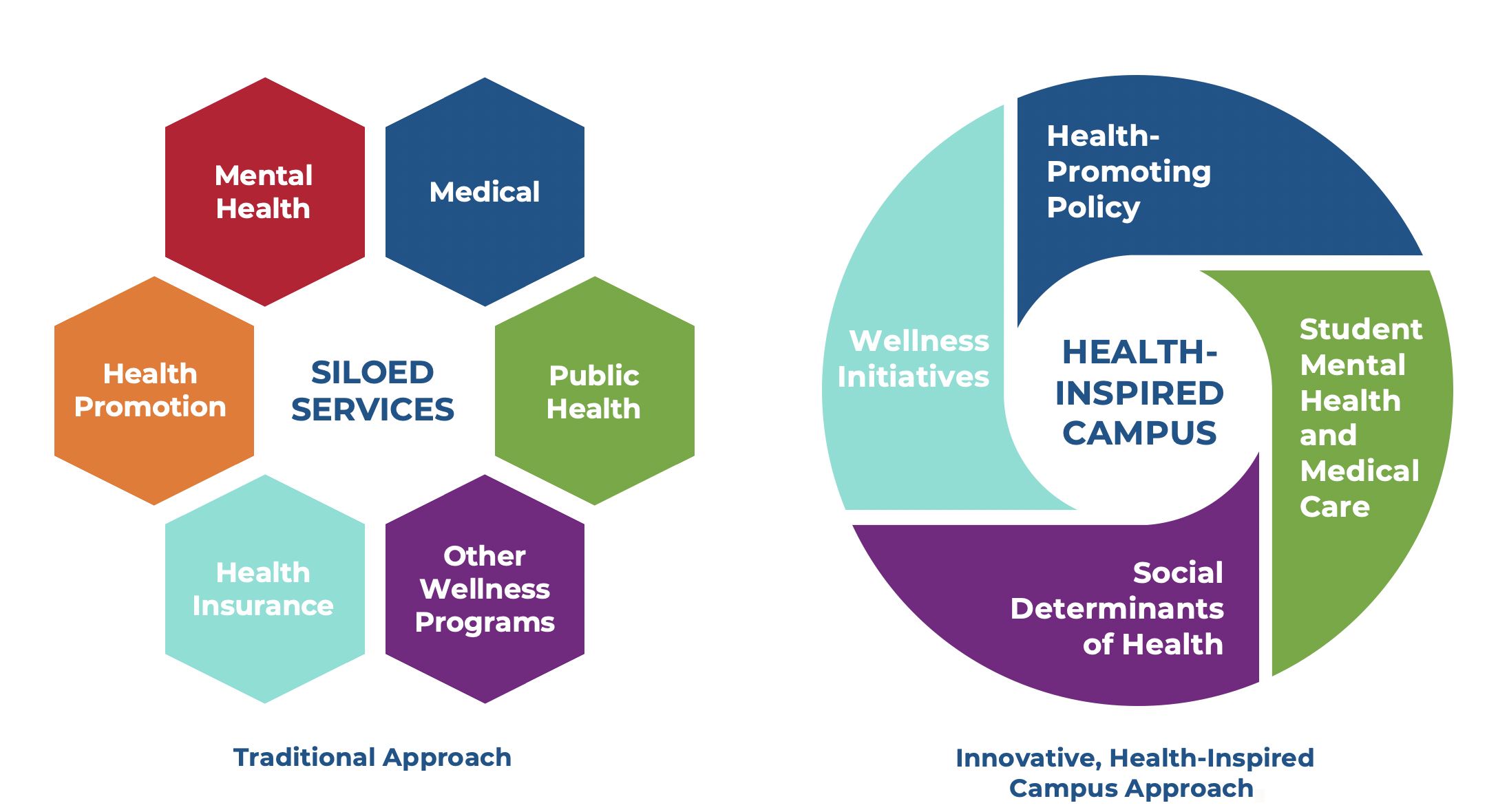In Brief
A hopeful model for the future
- A rich theory basis exists to guide colleges and universities in their efforts to advance campus well-being.
- Systems approaches help to address complex societal challenges by considering the entirety of the problem and the relationships within the scope of the problem rather than focusing solely on specific aspects.
- Advancing a health-inspired campus requires a whole-of-campus effort.
What is a health-inspired campus?
It has been nearly 10 years since the International Okanagan Charter for health-promoting colleges and universities was developed. Recognized as a promising systems approach to advance campus well-being, the charter centers on a call to action to embed wellness into all aspects of campus.
Embracing a “health in all policies” approach requires strategies that infuse health and well-being into the institution's entire fabric, including academics, student affairs, operations, business practices, healthcare professionals, and more. Promoting a “health-inspired campus” requires transcending the traditional siloes among campus functions — a common challenge for many institutions.
Health-inspired colleges and universities create conditions that advance the well-being of the people who live, learn, work, and play on their campuses.
Highlighting health equity
Leveraging the unique role higher education plays in developing individuals, communities, and society, the Okanagan Charter can inform strategies to influence the “well-being of person, place, and planet.” Sustainability and health equity are vital elements, and health-inspired campuses ensure that all campus community members have equal access to resources and opportunities to support their well-being.
Health-inspired colleges and universities create conditions that advance the well-being of the people who live, learn, work, and play on their campuses.”
Translating theory to reality
Many college health promotion professionals ground their efforts in the socioecological model of health outcomes, a best-in-class systems theory embedded within the Okanagan Charter. However, this approach involves investment and a long view to be successful. In short, advancing a health-inspired campus requires a whole-of-campus effort.
Here are three actions colleges and universities can take to move toward becoming — and maintaining — a health-inspired campus.
- Look upstream. Complement clinical services with effective and affordable preventive solutions and health promotion initiatives, such as Collective Impact efforts led by your campus wellness coalition.
- Leverage data. Assess campus conditions such as health-promoting policy, social determinants of health, campus-wide wellness initiatives, and student mental health and medical care to inform the design of your desired future state and translate your decisions into action.
- Integrate clinical care and services. Structure the continuum of student health and well-being services in a way that encourages integration and collaboration to provide holistic care.
Looking ahead, a holistic approach to campus health and well-being will continue to be a priority for colleges and universities.
To discuss the factors unique to your institution’s campus health and well-being strategy and begin creating a new path forward, contact our team.

